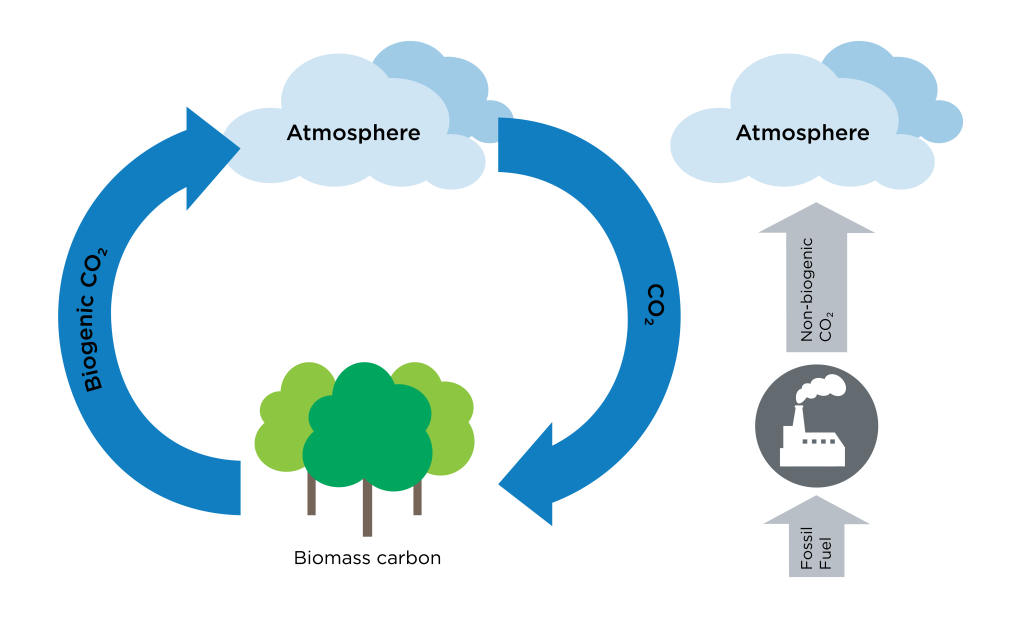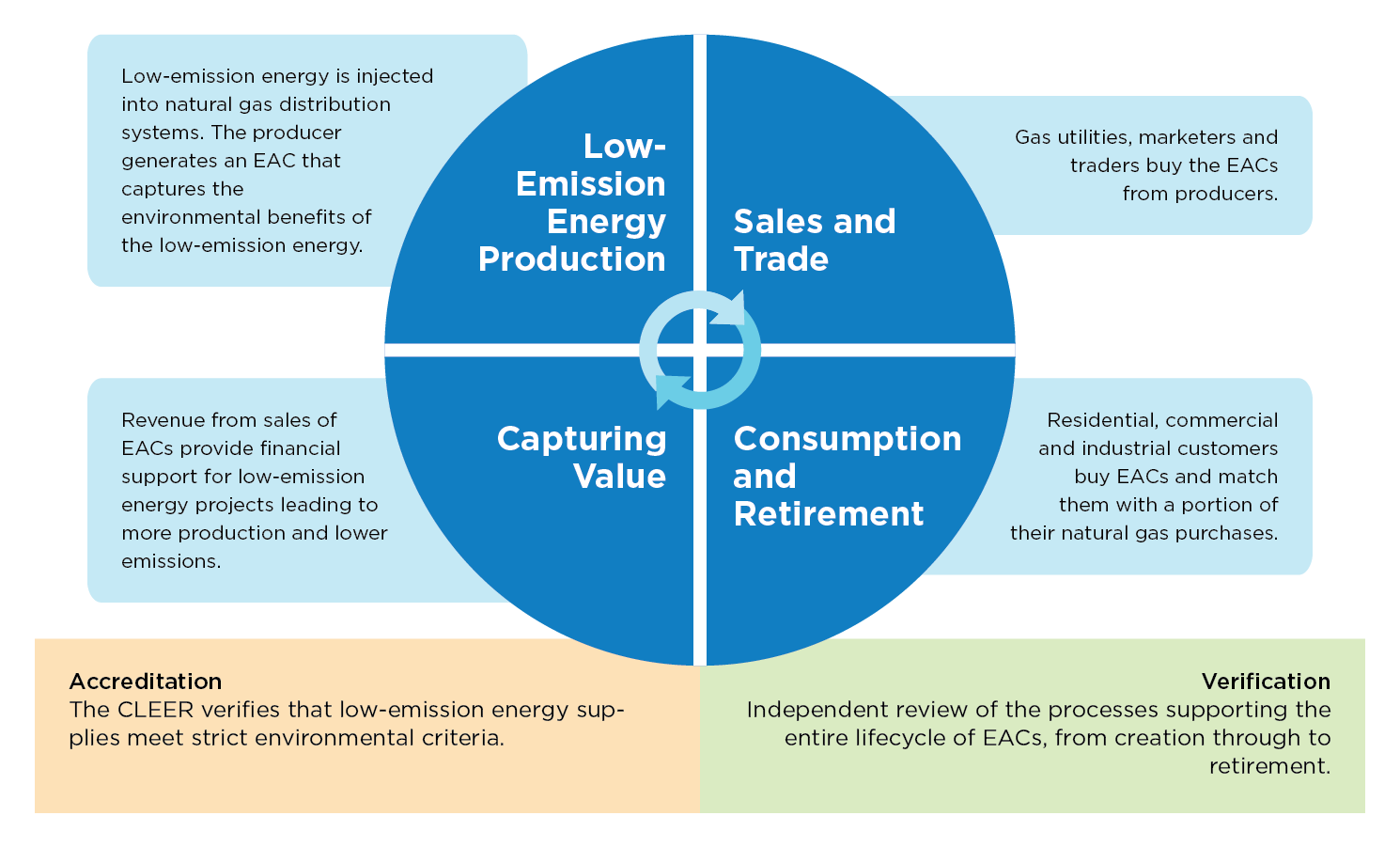CLEER: A centralized repository of production data from all low-emission energy produced in Canada
What is low-emission energy?
Types of low-emission energy include biogas, biomethane and hydrogen. Low-emission energy can have significantly lower greenhouse gas emissions compared to natural gas. The main form of low-emission energy available today is biomethane (also known as renewable natural gas, or RNG), which is made from renewable energy sources such as agricultural and food waste, and wastewater and landfill gas. Biomethane is chemically identical to natural gas and can therefore be delivered by natural gas utilities through the same pipeline system, and burned in the same appliances without any impact to performance.
Why is biomethane low-emission energy?
Both natural gas and biomethane release carbon dioxide when burned in furnaces or other heating appliances. However, biomethane is produced from plant-based matter that absorbs carbon dioxide from the atmosphere to grow. If left to decompose on its own, this matter would return its carbon dioxide back to the atmosphere.
The production and combustion of biomethane is part of this short-term carbon cycle. Therefore, while burning natural gas releases carbon dioxide that has been trapped in the earth for eons and increases the total amount of greenhouse gases in the atmosphere, burning biomethane returns to the atmosphere the carbon dioxide that was absorbed from the atmosphere by the same plants as they grew.

Courtesy of the International Energy Agency
Canadian low-emission energy value chain

How it works:
The operation of the Canadian Low-Emission Energy Registry is founded on the principle that low-emission energy is comprised of two products: (i) the physical molecules and the energy it provides, and (ii) the environmental benefits that are quantified and captured in an Environmental Attribute Certificate (EAC). Each product is tracked and traded separately.

